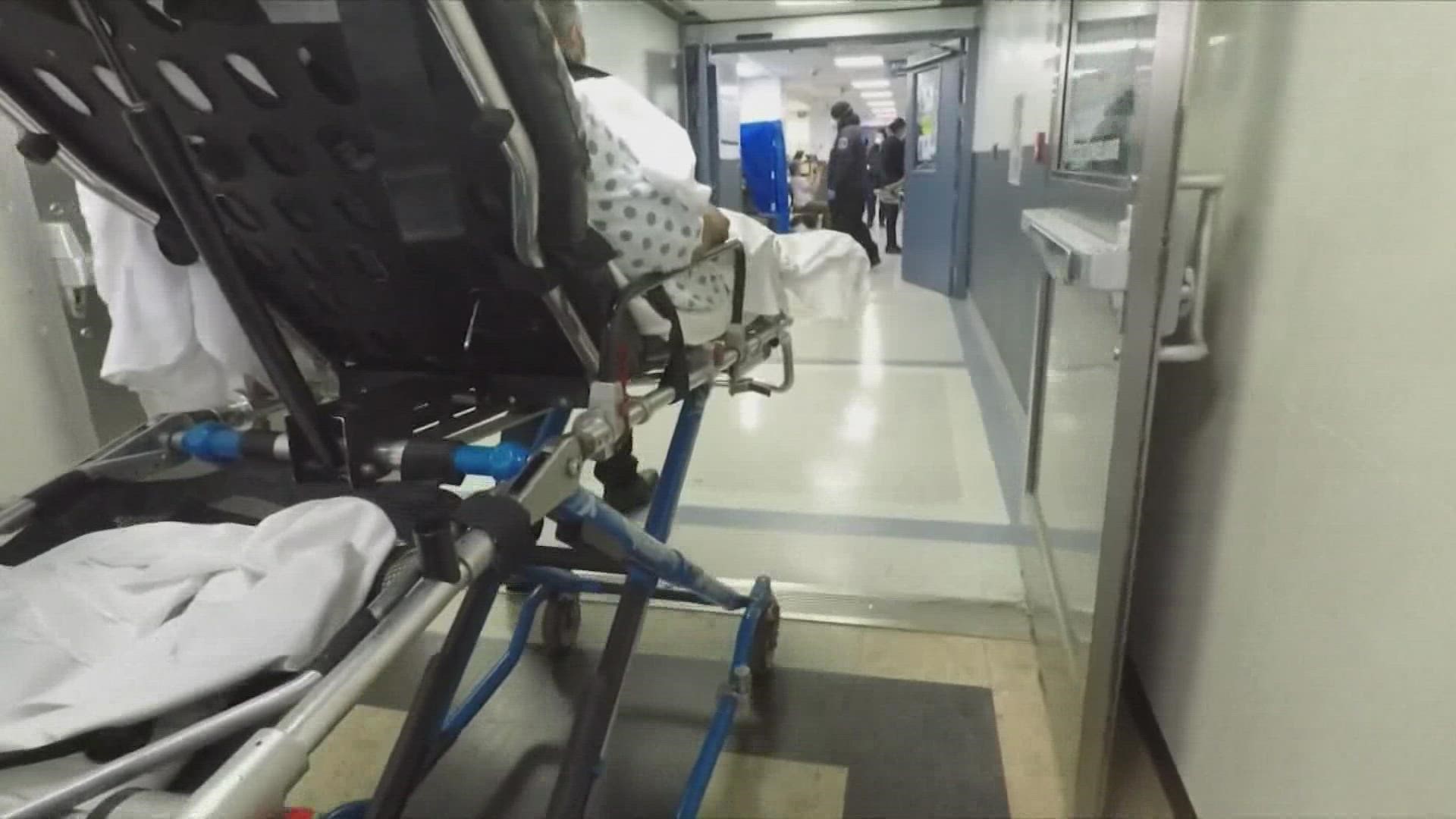WASHINGTON, USA — The Washington State Hospital Association's (WSHA) Chief Financial Officer Eric Lewis gave an alarming message Thursday while sharing the results of a survey that represents 97% of inpatient, acute beds across the state.
“It is like nothing I have seen in my career and hospital leaders around the state are very concerned about this," said Lewis.
Hospitals statewide suffered a net loss of nearly $929 million in the first three months of 2022, according to Lewis.
As operating costs grew by 11%, Lewis said operating revenue only increased by 5%.
Lewis described the losses as "unsustainable."
As a result, WSHA CEO Cassie Sauer said beds and services are being paired back.
While most hospitals are not-for-profit, Sauer said those hospitals still need some profit margin or reserves because they are in danger of not being able to increase wages and retain workers, or maintain and update medical equipment.
“Our concern really is patients," Sauer said. "It doesn’t work to keep operating, 10% of expenses over revenue and at some point you have to cut what services you provide.”
One of the main causes of financial losses, according to Sauer, is the high number of high-cost patients staying at hospitals long term when they need to be discharged to long-term care facilities for continued care.
For EvergreenHealth in Kirkland, the weekly financial loss for long-term patients is $1.3 million a week.
Currently, the hospital has more than 46 patients who need long-term acute care, according to Mary Shepler, chief nursing officer at EvergreenHealth.
"We are spending a fortune on contract labor to staff extra beds," Shepler said.
Any help hospitals received from the federal government's COVID-19 relief funds is now gone, according to Sauer.
“The federal relief funds didn’t cover the delta or the omicron waves," Sauer said. "They only were given at the beginning of the pandemic, so the highest surges that we had there was no federal relief for those.”
Other aspects driving up costs for hospitals include Medicaid reimbursement, high inflation and labor shortages, according to the WSHA.
WSHA leaders said long-term solutions will require working with the state legislature.
During the Thursday briefing, WSHA said the Medicaid reimbursement rate to hospitals has not increased in 20 years.
All 52 rural hospitals and health systems in Washington state reported negative margins and accounted for 99% of the losses statewide.
WSHA leaders said some hospitals could be looking at bankruptcy or closure because of the financial challenges. For single-hospital communities, closure would be critical, according to Sauer.

